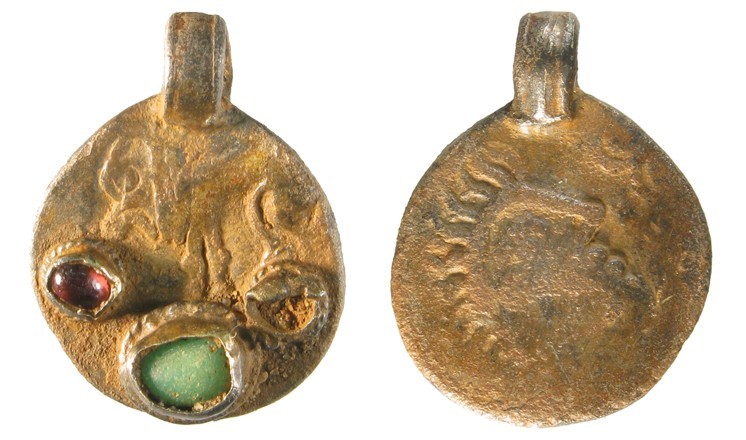Rare coin pendant acquired
RSS FeedAn interesting trend in artefact studies over the last few decades has been the emergence of 'object biographies', the idea that the objects we interact with on a daily basis shape our lives and experiences just as much as we think we create and control them and that our relationship with objects can change over time. Some objects have more interesting stories to tell than others, sometimes extending far beyond the initial interaction they had with the culture which originally created them. This pendant, discovered by a metal detector user at Horncastle in early 2012, is just one such object which has been altered by different cultures over time.
The heart of the pendant is an Iron Age silver coin, produced in northern France in c.70-60BC by the Suessiones tribe. The Suessiones, though their tribal lands occupied an area just to the northeast of Paris, were a Belgic tribe. Caesar mentions the tribe in his 'Gallic Wars', writing that they possessed extensive and fertile lands and had, in Caesar's own lifetime, been under the command of the most powerful man in Gaul. This man, named Diviciacus, had ruled over many of the Belgic tribes and even over parts of Britain, though the extent of his British territories is not known.
The coin, still identifiable beneath its later adaptation, bears a male portrait with a strong nose and wavy hair on the obverse. The reverse, obscured by the addition of the Early Medieval inlays, bears the image of a lion, struck off centre.
The life of the coin between its minting in the 1st Century BC and the Early Medieval period is lost to us, but it was in the 6th or 7th Centuries that it was rediscovered and began its second life as an item of jewellery. The Early Medieval conversion consisted of the addition of a suspension loop and three gold collets and the gilding of the surface of the coin. The collets were inset with stones, of which two survive, one of green glass and the other of garnet. The symmetry of the collets suggests that the missing stone may also have been a garnet. The arrangement of the suspension loop and collects is of interest, as it references the lion on the reverse of the coin rather than the portrait. Due to the die orientation of the original coin, the portrait sits at an odd angle but was clearly not intended to be seen when the pendant was worn. The collets, however, surround the offset lion, giving the appearance that the beast is standing upon them.
The conversion of Iron Age coinage to jewellery is not unknown and appears to be a Frankish custom. Although Gaulish Iron Age coins circulated in Britain, it is most likely that this example remained on the continent until after it was converted into a pendant, and entered Lincolnshire in its final form.
This short article was published in the Society for Lincolnshire History and Archaeology's 'Past and Present' magazine, issue 95. You can find out more about the SLHA here.
Comments
There aren’t any comments for this blog yet

